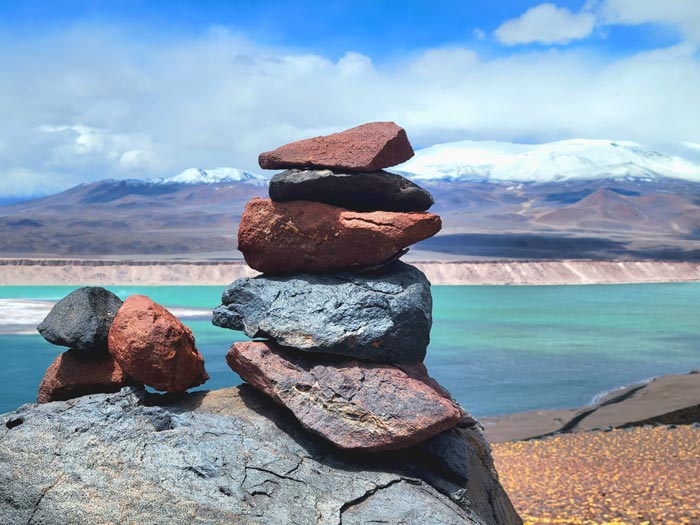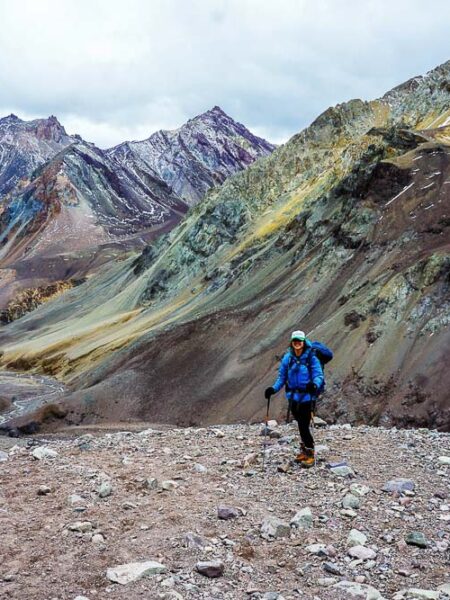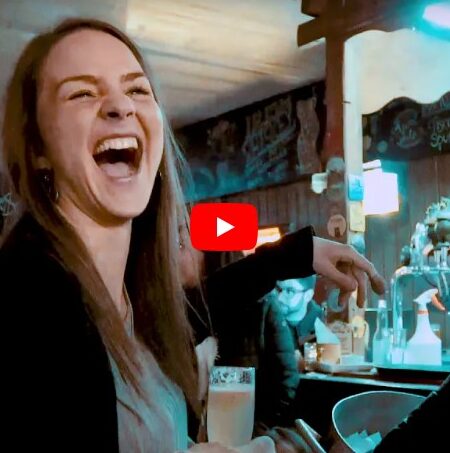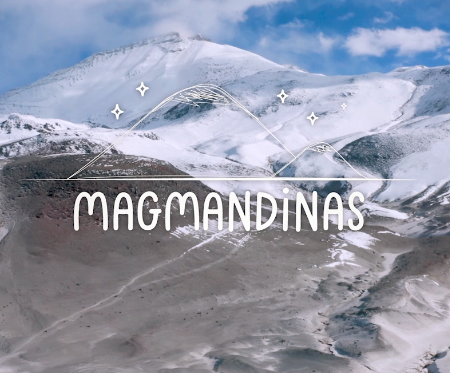When you’re looking for something to add to your itinerary… always talk to the locals!! In some casual chats, we learned about Cochabamba and Villa Tunari, which ended up being a perfect little detour between Uyuni Salt Flat and Copacabana. There are so many unexpected places to visit in Bolivia!! This article is about a big city with hustle and bustle, and another one, just on its outskirts, that lays low-key in the sub-tropics.
–
Because of our bad bus luck trying to see the Uyuni Salt Flats, we lost a full day and only had part of a day/night to work with before making our way to Copacabana. With such limited time, it was hard to decide what to do. There are so many places to visit in Bolivia, but in general, you need more time than what we had.
Luckily, the locals never fail!! And just like that, we learned about Cochabamba and Villa Tunari in Bolivia.
Unexpected places to visit are usually hard to reach
Take a bumpy ride to Cochabamba, Bolivia
Anyone that knows me will say I’m an overnight bus lover!! One of my greatest gifts is the gift of being able to sleep, like a rock, anywhere! With overnight busses I get go to bed in one spot, sleep for free, and wake up in another. Sounds like a great deal, if I don’t say so myself.
That said, we got on this bus and quickly came to the conclusion that it would be a hard ride. First off, the route to Cochabamba had no road. Second, it was a regular local bus, not a travel bus. Not to mention that even travel busses in Bolivia are a little more rusty than others in Latin America. Anways, being a normal bus, and an old nomal bus at that, there was no slight reclining, no bathroom, and no heat (but that’s a given).
In the middle of desert, we were feeling the brunt of the Bolivian nights. Teresa and I sat as humanely close to each other as possible. Any and all shared body heat was savored and necessary.
More than a few times everyone in the bus got some serious air. Even with your butt in the seat, the entire ride was over deep divots in the land. Considering this is a road frequently traveled by workers going to the mines, it’s a shame the government hasn’t invested in building a real road for them.




Bus is a main form of local transport in Bolivia
Tip: When going to an unexpected place, talk to people on the bus
The man sitting next to me was a super friendly Bolivian named Pedro. Finally heading home, he had just finished a one month job in Potosi, one of the biggest mining towns. Yum, Potosi and it’s peanut soup. That’s where Teresa and I had ended up for lunch after getting deserted by our bus driver on the way to Uyuni.
Anyways, he and his brother travel around the country building roads in the mines, under the ground. Although pitch black, it was only 8pm so I stayed up and talked with him for a couple of hours about life and work. Honestly, these conversations are what brings my travels to life. Few things make me feel so blessed and grateful. Not just for the life I have and blessings I’ve been given. But also for the opportunity to cross paths with people so different, only to find human nature has so much in common.
Although Pedro had worked in the Uyuni mines many, many times, he’d never had the opportunity to visit the Salt Flats themselves. The Uyuni Salt Flats are about 30 minutes outside the village where he had spent many many working days of his life.
Sometimes when we’ve got things so close, we don’t take the time to see them since we take for granted they’ll always be there. But on the other hand, when you’ve got family and obligations, it’s not always easy to take a few extra days for travel after already being gone a month. And that’s due to both more time away and also for the money involved in doing so. We gotta put ourselves in the shoes of other people be jumping to conclusions.
Eventually, I feel asleep, with my body clenched tight to keep in my heat.
Pedro woke me up about 3am when we arrived to Oruro and showed us where to get on the next bus for Cochabamba. We said goodbye, nice to meet eachother, and wished luck, before Teresa and I sleepily got off the bus.
We crossed the street and had down-to-the-minute perfect timing. The bus from Oruro to Cochabamba was just getting ready to leave when it saw our bus pull over. It waited to see if anyone needed to hop on, and sure enought, we did! It was about 4-5 more hours to Cochabamba, and this bus was so amazingly warm. I don’t think I’ve ever been so happy to get on a bus.
We quickly fell asleep and suddenly I fazed back in about 6am. Checking my watch, we were supposed to almost be there. So why weren’t we moving? Well, a big boulder fell off the mountain and no one could pass! Yes, it was a traffic jam on the mountain. And yes, our luck in Bolivia bus luck was so good we should have bought a lottery ticket.
When visiting unexpected places, unexpected things happen
On the plus side of so many bus problems, it’s the perfect detour excuse! There are so many “off the main itinerary” places to visit in Bolivia, and bus issues are they to helping you see those places! haha. The only reason we were going to Cochabamba and Villa Tunari was because of bus problems on the way to Uyuni. Which, also gave us a great lunch in Potosi. At the end of the day, you just have to go with the flow. There’s no point in getting upset or stressing out. We’re here to travel, experience, live, and have fun.
The mountain sunrise was incredible. We were re-entering the tropical part of Bolivia and the landscape was green mountainous. What a gift of love and energy that surise gave us! Unfortunately, I have no pictures of this moment. My cell phone and camera had died, in a stroke of bad timing.
After a couple of hours, some trucks had come and removed the boulder and we finally arrived. Cochabamba was huge. Narrow but full streets of people, vendors, little stores and cars. We were starved and walked towards the people selling foods in the street, in search of breakfast. Pedro had given me an insiders tip when I told time we were on our way to Cochabamba and I was on a mission to find it.
He told me about a traditional “treat” in Cochabamba, api con pastel. Basically, it’s a warm drink, cooked by the many vendors on the side of the street, that contains milk, corn, and sugar. There are three different types, purple, green, and white, depending on the type of corn you choose.
The drink is served with a fresh fried dough-pastry sprinkled with powdered sugar. Woooow, now that was DE.LI.CIOUS.
”If you find yourself in Cochabamba, Bolivia, you must try a local favorite: Api con Pastel. It’s a corn based drink (yummy) that comes in 3 varieties and is served with fresh fried dough. Ummm, #gimmesome.
Chelsey Berg
Head to the jungle village of Villa Tunari, Bolivia
After breakfast we walked around a bit and checked out the thriving street markets. We wanted to stretch our legs a bit before hopping on another 3 hour bus to Villa Tunari, a jungle village where we’d spend the night.
On the bus, a young girl with her young child was quite interested in learning about Teresa and I. She was married and on her way to work at her mother-in-law’s restaurant in one of the tropical villages. She works there every Saturday to Tuesday. It was fun to chat with her, but hard to not contrast our similiar ages and different lives. I couldn’t imagine already having a two year old chile. Another instance of gratefulness. I’m not saying I’m happier than her, or my situation is better, because the reality is that happiness is perspective.
Entering into Villa Tunari, we were excited to do hikes in the jungly area. There’s monkeys, many birds, and more!
One hard moment, however, was when her two year old son finished his big bottle of Coke and went to throw it out the window. He missed the open window, and mid-air, she changed its direction and batted it out for him. Although I’ve seen it a million times, it hurts to see that. I know that these kinds of behaviors are directly related to awareness and education (on the topic), and I wish the government would make environmental awareness a larger priority. Bolivia is so geographically rich and diverse, and deserves to be taken care of.
Along the way we got had to go through narcotics inspection since that area is a heavy trafficking route. As with our trend, the 3 hour bus ride turned into a 6 hour bus ride because of complications. When we arrived, it was already pretty dark, which squashed plans for that day. We found a hostel and walked around as much as we could while we could still see.
The good thing with Villa Tunari is that everything you need to buy, is in one place!
When in Villa Tunari, eat river fresh trout – it’s grilled right in front of you
In Villa Tunari, all the restaurants lined the main street and all offered the exact same meals. The village didn’t feel like it could contain more than 300 people, but it actually has a population around 2,000. After walking the strip, we chose a restaurant that was grilling its fish out front. We sat down, ordered, and just relaxed. It was fun to think about our trip thus far.
The food came and, hands down, it was the best meal in Bolivia. Or my life.
My mouth waters just remembering it.
The grilled fish was so tasty and came with rice, a grilled yuca, a grilled banana, and a fresh salad. With nothing to do that night so we just enjoyed our dinner and chatted a bit with the chef and owner of the restaurant. She had the cutest little girl that was rolling around in one of those play-chairs with wheels.
In the middle of the night, it started pouring. It continued all through the night and, in the morning when we woke up, it showed no signs of stopping. It was tremendously heavy, which meant that there was no way we’d be hiking in the tropical forest, looking at monkeys, unique trees, and other critters.
Our plan, and reason to come, had been to spend the day hiking around this area. That obviously flowed right into the river with all the rain. So, basically, we traveled 6 hours on bus for a yummy dinner. But, that’s part of travel. From the pictures I’ve seen of the hikes and the dinner I had, I think Villa Tunari is one of the unexpected, “off the main intinerary” places to visit in Bolivia that deserve a look.





Have breakfast at the local market before heading back to Cochabamba
We had breakfast at the local market, an egg sandwich with some tea, and picked up some fruits for the bus ride back. With the rainy day ruining our Villa Tunari plans, we hopped back on the bus, back to Cochabamba, to see if we could make something happen there.
There was a funny sign on the bus – no chickens welcome on taxis, cable car, or busses!
Thankfully, this bus ride not only went according to schedule (only 4 hours, yay!), but it also offered us some entertainment. About 1/2 way, at the narcotics checkpoint, a man came on the bus. He started talking about health, exercise, and all that good stuff.
Naively for a second I thought that maybe he worked with the government because, for a country filled with produce, some education around health would do its fair share of good. Soda, sugar, and fried street foods are everywhere. That said, I’d also have a hard time not eating api con pastel every damn day.
Soon, however, it became clear he was a salesman. And, wow, did he have it and it was entertaining. He was selling health foods like frog juice (mmm, no thanks) and a bunch of other things for weight loss, memory, tapeworms, and virtually every illness known to Bolivia.
He went on, and on, and on for the rest of the trip, 2 full hours! It was quite hilarious… but people were buying it up like crazy. Towards the end, they started (kind of) joking about how they needed something to get rid of him… because he had stripped all their money and had solutions to everything. haha
A GUIDE BY YOUR SIDE (AND IN YOUR INBOX)
My “Word Cairns” newsletter sends inspiration, tips, stories, and photos from wild corners of this world. Plus, you’ll be the first to know about new expeditions, activities, and special offers.

Ride the sky cable car in Cochabamba, Bolivia
Back in town, we decided to check out the skyline cable car in Cochabamba that takes people up to the Virgin Mary statue. It was, up until recently I think, the highest and longest cable car system in the world. When looking it up, I also learned that it provided an unintentional social benefit – helping close the class gap by giving poorer, indigenous communities access to other neighborhoods. Here’s an interesting article written by The Guardian.
The cable car in Cochabamba is one of the longest and highest in the world.
It was fun riding the cable car and seeing all the adobe colored houses get smaller and smaller. Up at the top, the city view was very impressive. Afterwards with 4 hours before needing to go back to La Paz, we wandered around, looking at the cute plazas.
Unfortunately, it was Sunday and, like in most Latin American cities, everything was closed. We stopped people, asking for where to eat, and no one knew. Only ice cream shops were open. Finally, we got directed to a pizza place. Hmmm, it was more like a “Mc Donalds’s playland minus the toys” kind of pizza place.
I asked one of the workers if there was a bar in the area (because, restaurants were obviously getting me nowhere). He cheerfully replied, “oh, we serve beer!!” and with a smile I diverted by making the excuse we wanted to ” try different places while here.”
He sent us down the block to a suuuuuper cute cafe/restaurant! What?! How the heck did I ask a million people for a restaurant, only to be sent to ice cream shops and pizza version of McDonalds? In the end, it’s because they all think tourists want the neon lights, not a cute, local, kind of place. They were trying to be nice, and thankfully we got to enjoy this place for our last few hours!
Sitting down, we ordered a mouth-watering hot chocolate and jealously looked at the menu. It all sounded soooo good! The waiter was so nice and we just sat and chilled our two hours away. We did order a bruschetta, only because, although no longer hungry, it looked so good.
In the end, while not what we planned, it turned out to be a fun little excursion. We closed the books with the night bus back La Paz, excited for our trip to Copacabana in the morning.


Tour Bolivia off the beaten path
Check out the rest of my articles on Bolivia
Bolivia is a geographically diverse country with so much to explore. Browse around, get adventerous, and set your “what not to miss in Bolivia” list!
- Uyuni Salt Flat Tours and the famous funky perspective photos
- Bike Yungas Road, aka, Bolivia’s Death Road
- Visit Coroico, a colorful little jungle village and it’s hidden waterfalls
- Things to do in La Paz & the Witches Market
- Spend a few days in Copacabana and Sun Island (Isla del Sol)
- If you get caught in a strike, don’t worry, so did we. What to do?
Related Articles

I'M TALKIN' TO YOU
Purpose-driven people who feel compelled to make life meaningful for yourself and others.
Outdoor-inspired people whose best self comes alive when experiencing beautiful places and pushing your limits in the open air.





